Do you remember The Gates, an art installation that took place in New York City back in 2005?
This exhibit ran for two weeks in Central Park, designed by Bulgarian artist Christo Yavacheff and French artist Jeanne-Clause. It featured 7,500 orange vinyl gates set up along 23 miles of pathways. I remember coming down from college in Boston one weekend to see The Gates and take in a Broadway show (Little Women, if you’re curious). The project received some negative feedback from New Yorkers, but as a visitor I loved walking through these saffron-lined paths.
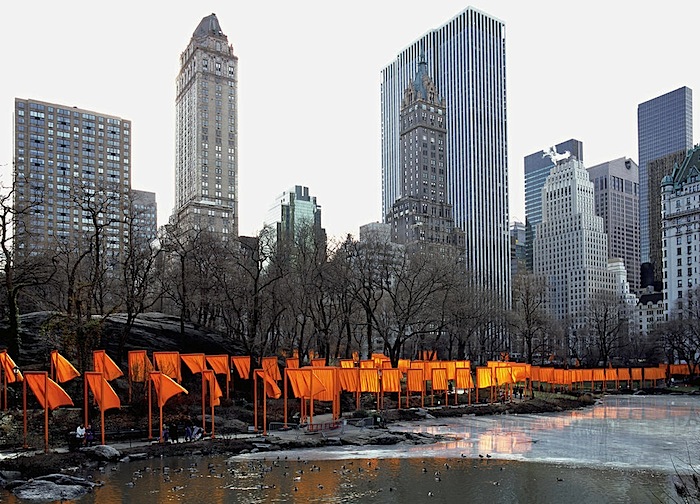
(image via)
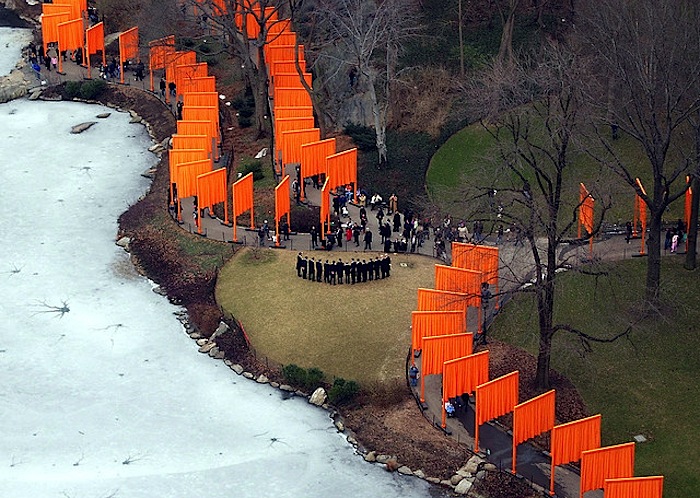
(image via)
I didn’t realize it at the time, but The Gates exhibit was inspired by the Fushimi Inari shrine in Kyoto, Japan. Each individual gate is called a torii, usually vermilion or orange in color, lining the entrance to a Shinto shrine. (Shinto is the indigenous spirituality of Japan — a set of practices to establish a connection between present-day Japan and its past, usually related to shrines, war memorials, harvest festivals, romance, and historical monuments. Thanks, Wikipedia.)
Fushimi Inari is a popular tourism spot and a dream for photographers. My friend Ayumi (whom I met on a tour in Australia) lives in Kyoto and has generously offered to show me around for the day. We begin at Fushimi Inari.
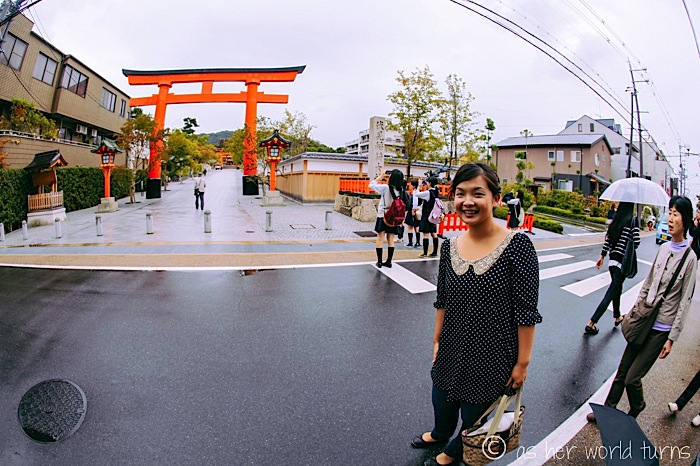
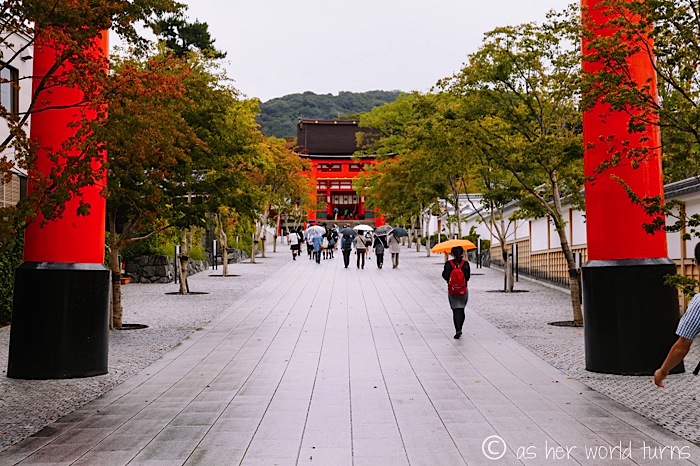
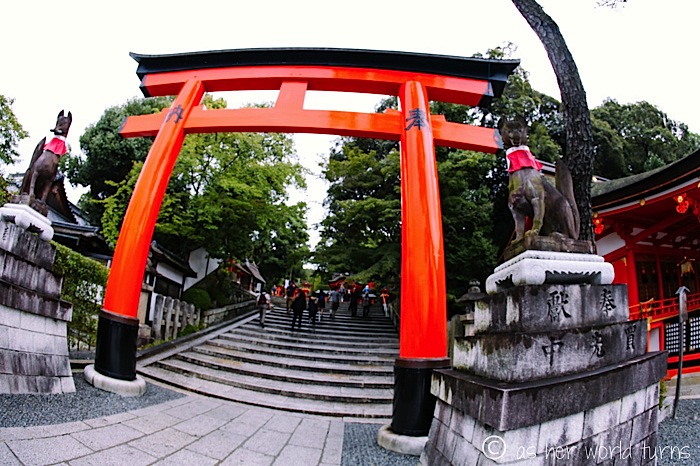

Including stops for photos (which happens a lot if you travel with me), it takes us maybe 90 minutes to complete the entire path and return to the metro.
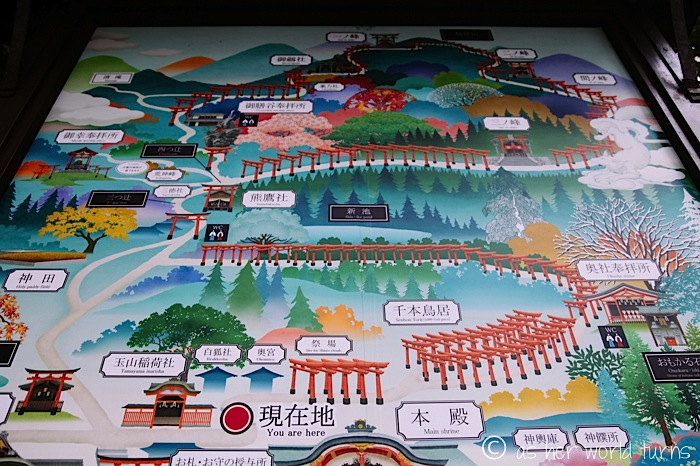

Each torii gate has been purchased by an individual or business. It’s an offering of sorts, in gratitude to Inari — the god of worldly prosperity. The name of the person or group that sponsored each particular torii is written in Japanese characters on the side of the gate (it’s easier to see the names in photos further down).


This string of gates is smaller — I can reach the top with my hands — and lined very close together.
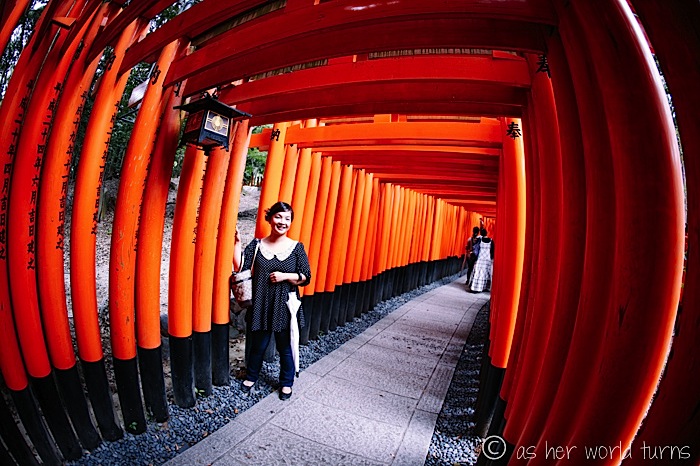
In this next photo you can see the Japanese characters spelling out the names of the individuals or business who have paid for each particular gate.
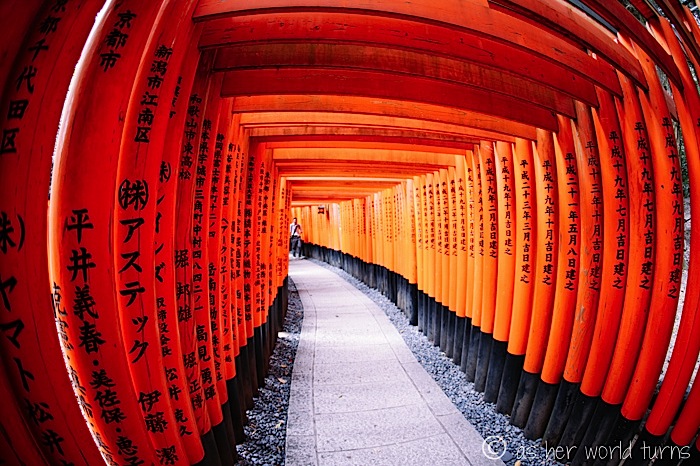
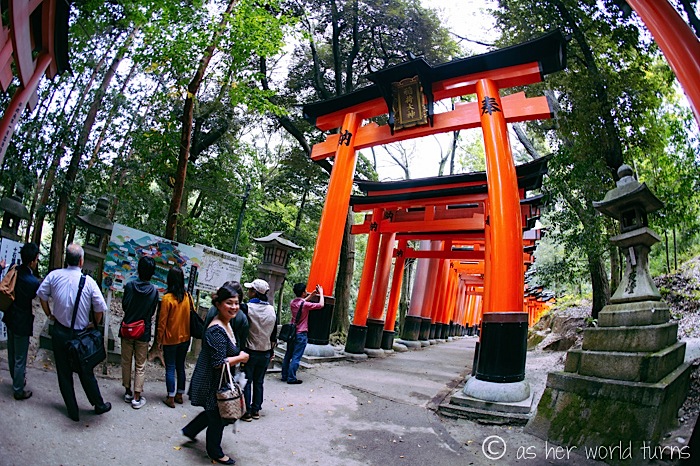

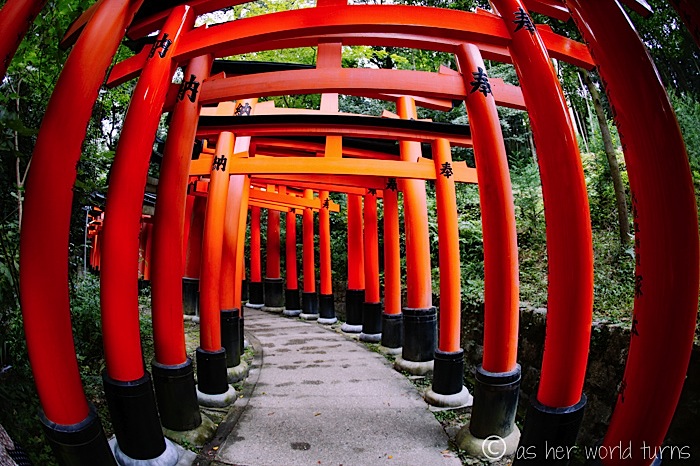
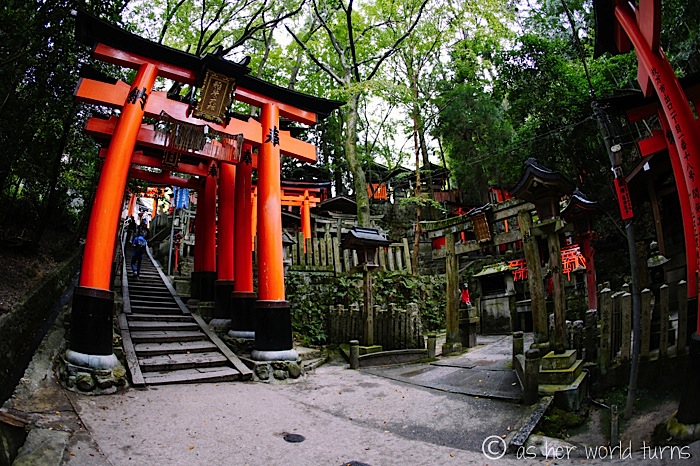
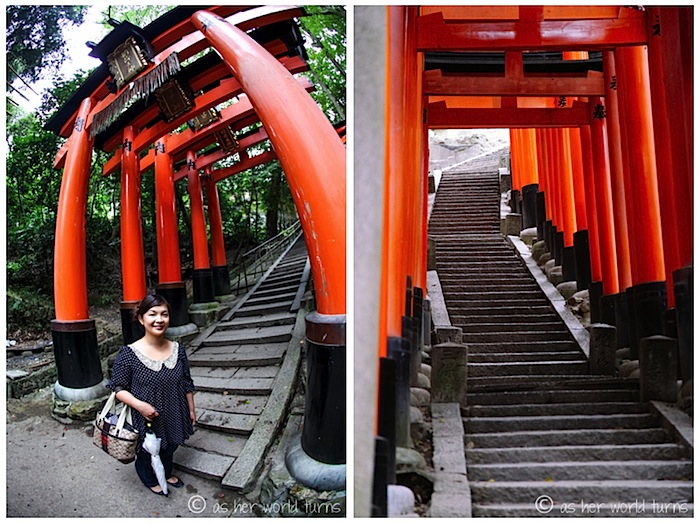

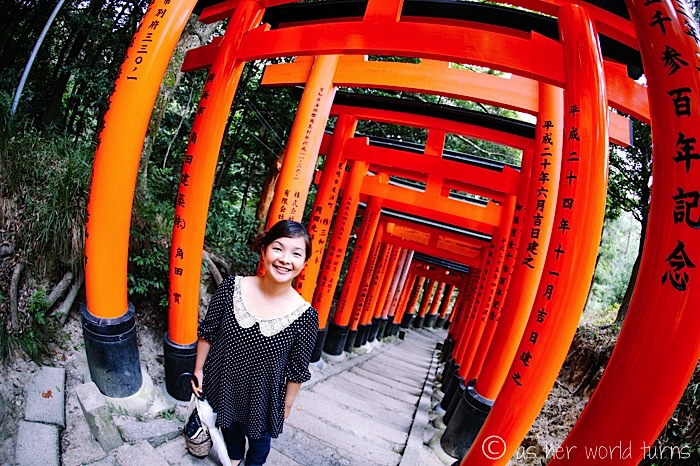
People can wash their hands here. The wooden scoops (for lack of a better word) are used for splashing water over the hands.

There’s a tea house set up along the path.

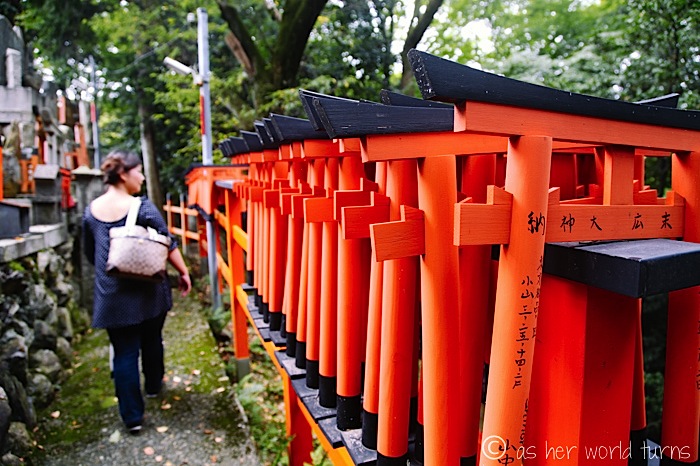
If you want to contribute a torri gate but don’t have enough money to spring for the large size, you could purchase one of these tiny gates which hang on racks at the top of the shrine. Notice how each one is marked by the donor’s name in Japanese characters.

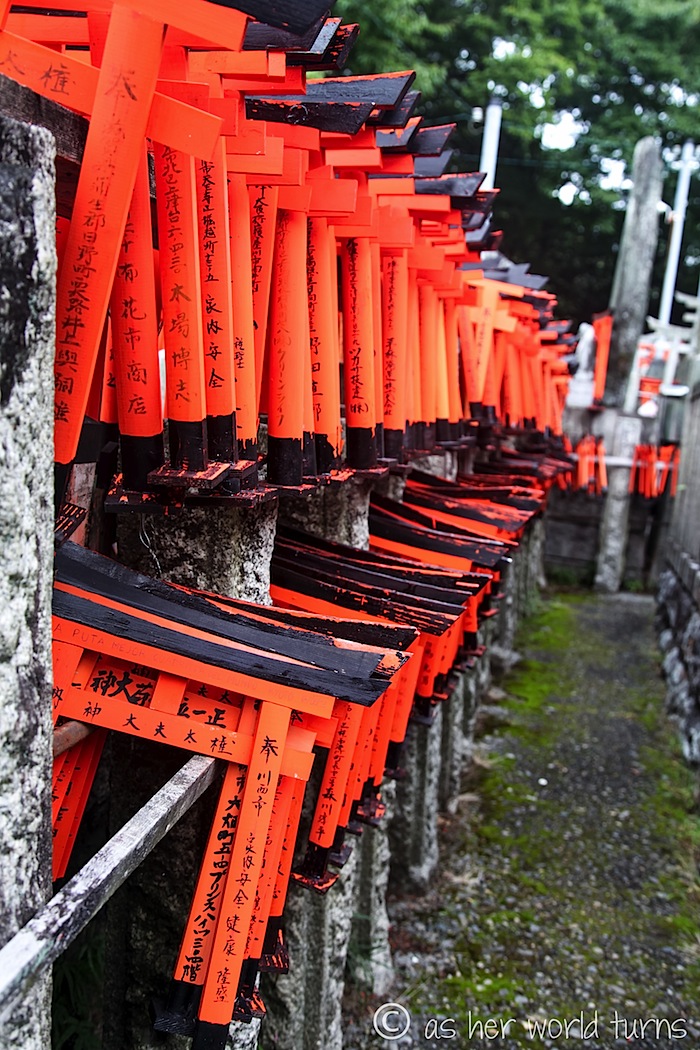
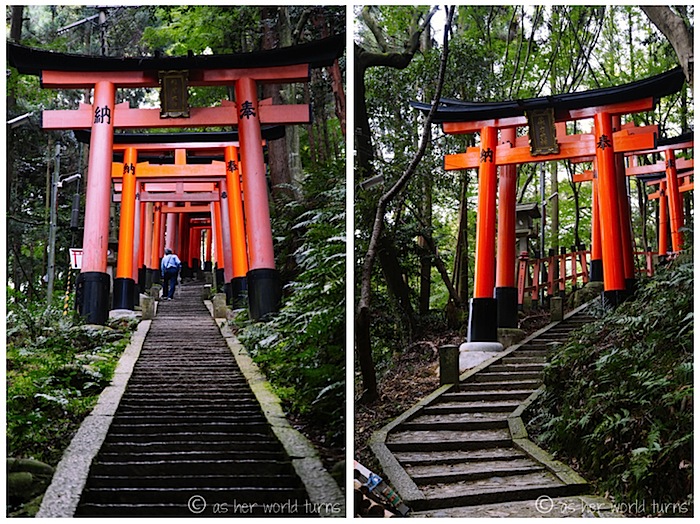
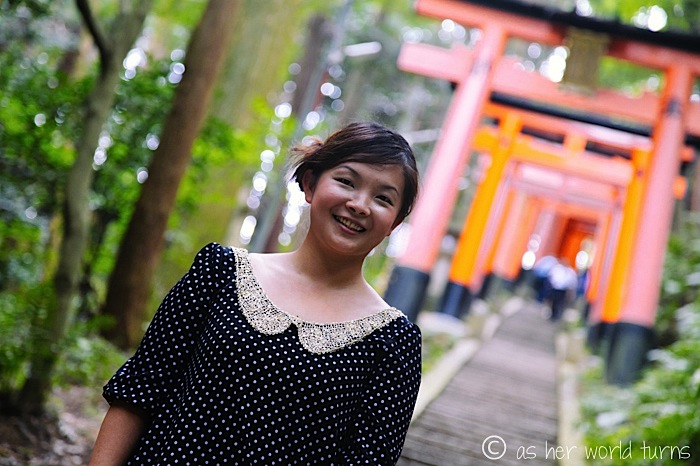
Many thanks to Ayumi for showing me a lovely morning at Fushimi Inari!
More on our afternoon adventures tomorrow…




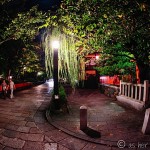


This is so neat! Very pretty.
Yes, pretty indeed! Those orange gates were so fun to photograph.